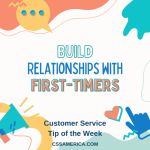I worked with a great client for several years who was in a leadership role in the education industry, and she was the executive champion for a culture-strengthening initiative. We were the outside firm helping to develop the overall strategy and facilitate the teams addressing the various aspects of the culture.
She often used the phrase Lift It Up. If there was an important topic, concern, or goal that needed to be known more broadly throughout the organization or brought to the attention of leadership, she would say that we needed to Lift It Up. If there was a best practice being utilized in one school which could benefit many other schools, she’d say that we needed to Lift It Up.
What it Means to Lift It Up
When you’re making the effort to lift something up, you’re making something a priority. You’re making an issue or a concern or goal or an opportunity known. Lifting something up is a positive thing; it’s like you’re recognizing the thing or the people that made that thing work, or that needs to work better.
How to Lift
So, let’s address this from a customer service perspective in a very tangible way, particularly lifting up positives.
Who can you lift up? You can lift up the co-worker who does something above and beyond. You can lift up your boss when they’re exhibiting the behaviors of exceptional leadership. Lift up your customer for bringing something to your attention, doing their part in the process, or being kind and respectful, despite the circumstances.
What can you lift up? You can lift up best practices of the facility or on a website. You can note some change that made life easier on staff or on those that you serve. You lift up examples of documents or posters that remind people of the organizational values or customer service standards. You can lift up that information received from customers, sharing how that’s helpful.
To whom can you lift it up? Lift it up to leaders so that they’re aware of excellence on the part of your co-workers or best practices that could be used in other areas of the organization. Lift it up to your co-workers so that they feel appreciated. And lift it up to customers for the same reason.
To infuse positivity and best practices in your organization, Lift It Up.
Signup for FREE Tips! Contact Us More Resources for You Visit Our Home Page
























